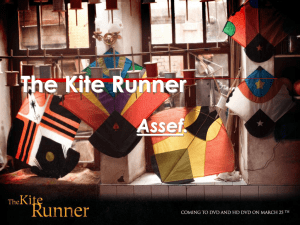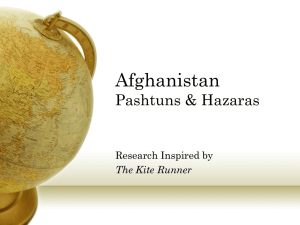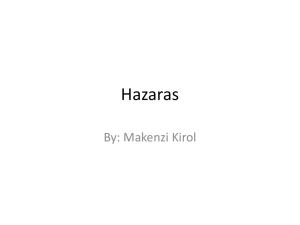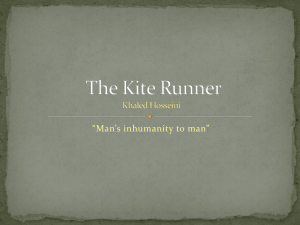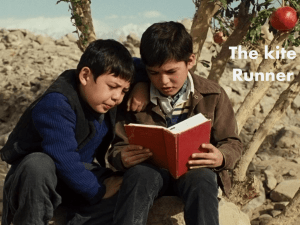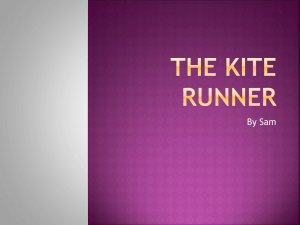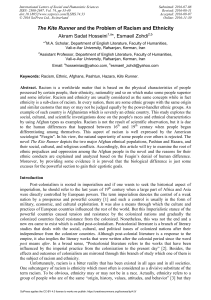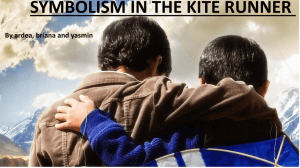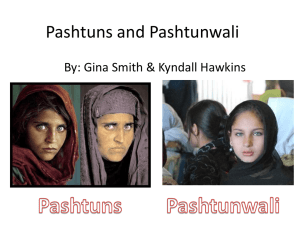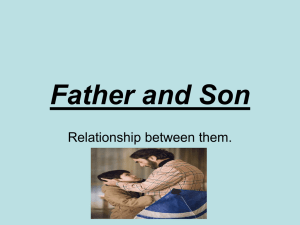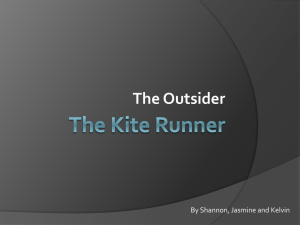The Kite Runner Discrimination
advertisement
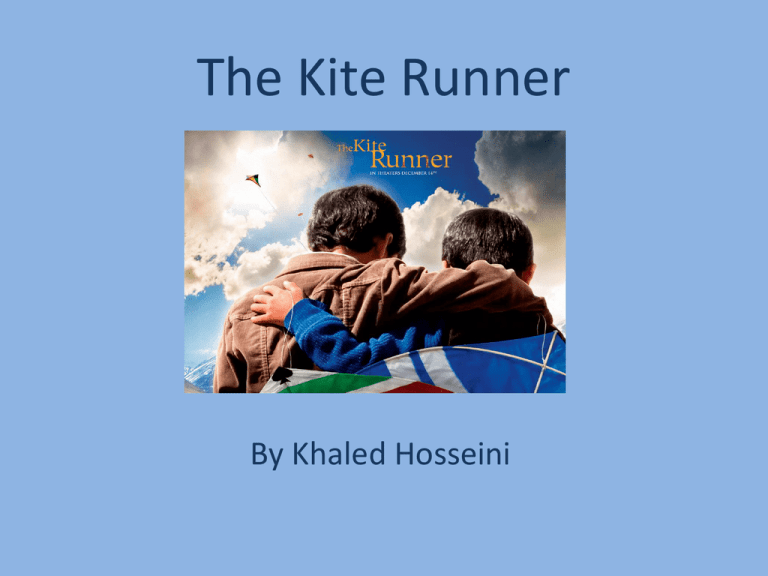
The Kite Runner By Khaled Hosseini Discrimination The theme of discrimination plays a major part in the book. It stems from the two races which feature in the book, Pashtuns and Hazaras. The Hazara race is seen to be the ‘weaker’ of the two, the narrator and main character Amir is a Pashtun whereas his ‘best friend’ and other main character Hassan, is a Hazara. Although Baba and Amir have been brought up to be kind to Hazaras and act as though they were no different from themselves not all of society was taught this way therefore the Hazaras are tortured and abused. Throughout the book the divide of races is made very clear through many ways, the mistreatment of Hazara’s being one. Hazara’s are subjected to severe violence and mockery in this book. The rape of Hassan in chapter 11 not only shows how he contradicts the view that Pashtuns have about Hazaras through his loyalty to Amir, it mostly show the inhumanity of one particular Pashtun, Assef. Class Division – Pashtuns and Hazaras Race limits many things in the lives of each character, for example the rape of Hassan by Assef. Assef believes like many Pashtuns that Hazaras have no rights as they are beneath them, this leads Assef to the conclusion that he has the rights to abuse Hassan. Another time when the class division is evident is when the truth about Hassan and Amir being brothers comes to light. It shows that throughout their lives the two brothers lived side by side, Amir in luxury and Hassan in poverty, the only barrier being their racial background. The Hazaras are discriminated against, abused, violated and killed by many Pashtuns. Pashtuns may be stronger in the sense that there are more of them physically but the idea of them being morally wrong shows that in fact they are no where near better than anyone and they are below the Hazaras for the way in which they treat them. Difference between Hazaras and Pashtuns Hazaras • The less powerful race known as the ‘weaker’ race • No right to education or learning so are used as servants • Work as servants for Pashtuns, cooking, cleaning and serving the Pashtuns • Difference of appearance with flattened noses and slanted eyes • Live either on the streets or in the servants accommodation of the families they serve • Have little in the way of belongings due to lack of money Pashtuns • The largest and politically more powerful race • Have rights to education, go to school • Work in higher paid jobs • Lighter skin, hair and eye colour • Have servants, better quality of life • Live in large houses, have servants and have many expensive belongings Hazaras which feature in the book Few Hazaras feature in this book in comparison to Pashtuns but the four are shown here. • Hassan – best friend of Amir and also servant to Amir and his father. • Ali – the father of Hassan, religious man with disfigurements and single father, also a servant to Amir and his father • Farzana – becomes the wife of Hassan and mother of Sohrab their son, she is shot by the Taliban whilst running from them after Hassan was killed. • Sohrab – the son of Hassan and Farzana, he becomes an orphan after the Taliban kill his parents, he is taken, tortured and raped by Assef but he is then taken to America in the last few chapters by Amir who hopes to create a better life for him. Examples of abuse Rape of Hassan in Chapter 11 by Assef The massacre of Hazaras in Mazar-i-Sharif and Hazarajat by the Talibs The stoning of Hazaras Shooting of Hassan and Farzana by the Taliban Capturing, torture, abuse and rape of Sohrab by Assef and the Taliban Beating of Amir by Assef The Taliban In Taliban controlled Afghanistan discrimination is everywhere. On one hand the Taliban do not seem to care who they abuse, torture or kill. It is not only the Hazaras who suffer but those who are not with the Taliban also. In this sense everyone who is not a Talib is not worthy. An example of this is when Assef makes Sohrab dance to music for his amusement, even although dancing and listening to music had previously been banned. Amir thinks “I guessed music wasn’t sinful as long as it was played to Taliban ears”. But on the other hand the Hazaras specifically are subjected to the most brutal violence and discrimination. The Taliban massacre the Hazaras in both Mazar-i-Sharif and Hazarajat region and anywhere they can find Hazaras. Assef describes Afghanistan as ‘ a beautiful mansion littered with garbage’ and says that ‘someone has to take out that garbage’. Assef also uses the term ‘ethnic cleansing’ a lot, this idea goes with his garbage metaphor. He deems Hazaras as not worthy of living in his land therefore he must kill them.
